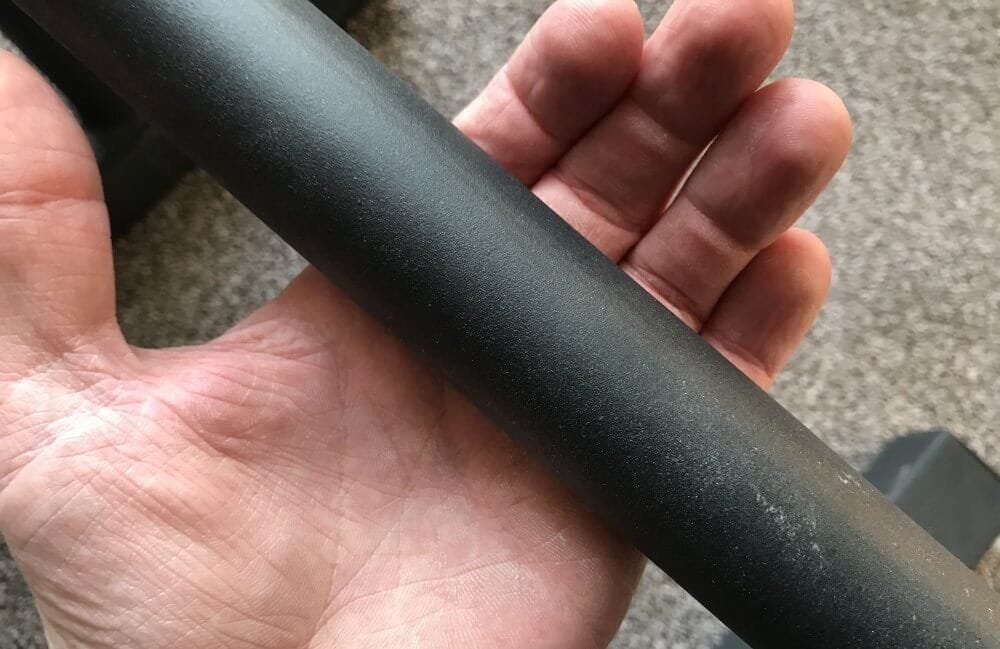When you’ve been performing pull-ups the wrong way for months, we don’t have to tell you that the callouses and constant blisters are very painful!
They never seem to heal right, especially if you’re trying to keep up with your pull-up routine and fighting through the pain too.
Table of Contents
Why Are You Getting Callouses On Your Hands?
If you’re suffering from callouses or blisters on the palm of your hands – a particularly soft & delicate part of the body – then it is a strong indicator that you’re gripping the pull-up bar incorrectly.
Callouses can be a good thing as they toughen your hands, but gripping the pull-up bar incorrectly can put much more pressure on the wrong part of your hands. In extreme cases, these callouses can even rip under excessive stress, as shown below.

We’ll first explain what you’re probably doing wrong (it’s extremely common) and then show and tell how to do it correctly. Here we’re not talking about pull-up technique specifically but more about hand placement and usage at the beginning and during a pull-up exercise.
When performing the gripping actions with your hands incorrectly, you’re using the palm of your hand nearest your fingers and the opposite side to where your knuckles are, to grip the pull-up bar. When grasping the bar this way, a fold of skin gets trapped between the compressed area where the metal bar is going across your palm and space just before your fingers.
See the illustrative picture below:


As you can see above, this action creates a bulge of trapped skin. With each subsequent pull-up motion, the skin gets mauled and roughed up. This becomes red, sensitive, and eventually, blistering will happen.
How to Grip the Pull-up Bar Correctly
For the hand spacing, aim to place each hand at shoulder-width from each other for regular pull-ups. There are alternative pull-up techniques for advanced athletes that use different hand positions, but here we’re just providing a general instruction for a regular pull-up technique.
For the finger position, let the top of your fingers roll around the bar. This is the area of the fingers before you get to the palm itself. The tips of your fingers will then wrap around the bar to the other side.
See the illustrative picture below:

Once this is done, it’s important to roll the bar in your loose grip until your fingers are wrapped around the bar to allow a comfortable grip (but not too tightly) without any skin getting trapped.
This may be easier to see using a pen as an example, rather than an actual bar:


Chalking Up Your Hands
Using chalk will help you grip the bar better, especially when your hands begin to get sweaty. The bar can also become slippy if chalk isn’t used, either from your own hands or somebody else’s hands if you are using a pull-up bar in a shared space.
If you choose not to use chalk, you may find yourself trying to grip the bar harder to make up for the reduced grip. This is more likely to damage your skin leading to the same issues as described earlier.

Dry Chalk Vs Liquid Chalk?
I’ve recommended using a dry chalk ball in various articles on this site, but many people choose to use liquid chalk instead.
Liquid chalk is less messy (some gyms may have a liquid-only policy), and some people find liquid chalk provides a better grip which is their higher priority. The application of liquid chalk has also been known to last longer.
I don’t like the ‘tacky’ feeling it has when rubbing it into my hands, which is why I choose a chalk ball. It all comes down to personal preference at the end of the day.
Whatever you choose to use, here’s our recommendations for cheap but good quality versions of each chalk type:
Avoid Using Gloves
While gloves might look stylish in workout photos, they’re not the best idea.
Using a protective glove prevents your skin from getting used to the feeling of skin on the bar. The natural and necessary process of the hardening and toughening of your skin when using a pull-up bar is prevented. As a result, when you always use gloves and then stop, your baby-like skin will blister up very quickly, especially if you’re using the wrong hand/grip technique too!
Gloves for pull-ups are only recommended when you already have blisters or callouses. At this point, it’s all about damage limitation and trying to avoid feeling more discomfort while keeping up with your workout routine.

Where Should Your Thumb Position Be When Gripping The Pull-Up Bar?
When gripping the bar, there’s the option whether to have your thumb positioned alongside your fingers above the bar or to place it underneath the bar.

While this is a personal preference to some degree, positioning your thumb under the bar helps when transitioning over the bar or when swinging intentionally as part of your planned movement.
There’s greater balance and control possible with the thumb positioned underneath, however, for regular pull-ups either thumb position works fine.
Talking from personal experience, I had always positioned my thumbs above the bar as I felt it gave me more power when working on my pull-ups. When I started getting into freestyle calisthenics and noticed that everybody else would position their thumbs under the bar, it took me a while to re-program myself to naturally have my thumbs under the bar for all hanging exercises.
If you don’t have a strong opinion of either option at the moment, I would recommend anybody reading this to get into the habit of using a thumb under the bar grip as it will benefit you in the long run!

Founder of www.calisthenics-101.co.uk. Training calisthenics since 2012.
Currently working on: 30 second one-arm handstand, muscle-up 360, straddle planche.
